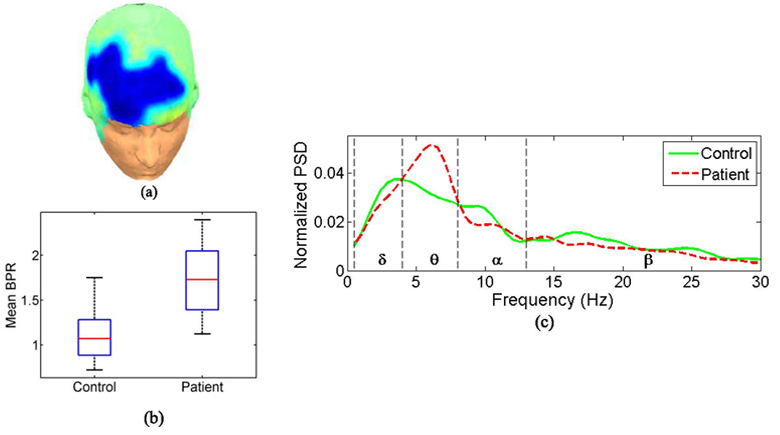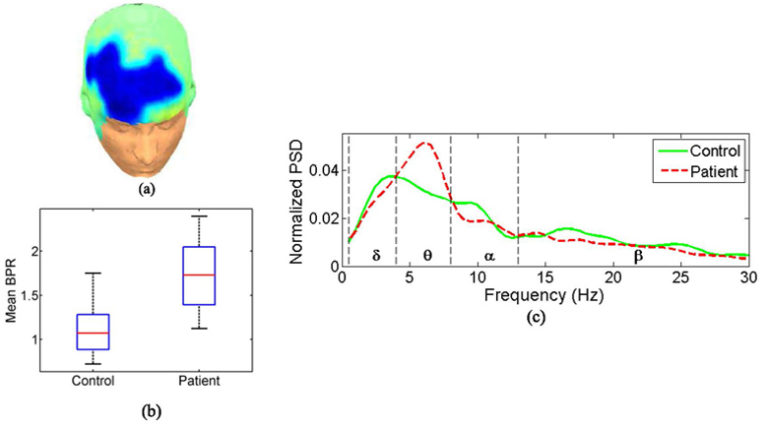
This study investigated spectral power of neural oscillations associated with word processing in schizophrenia. Magnetoencephalography (MEG) data were acquired from 12 schizophrenia patients and 10 healthy controls during a visual word processing task. Two spectral power ratio (SPR) feature sets: the band power ratio (BPR) and the window power ratio (WPR) were extracted from MEG data in five frequency bands, four time windows of word processing, and at locations covering whole head. Cluster-based nonparametric permutation tests were employed to identify SPRs that show significant between-group difference. Machine learning based feature selection and classification techniques were then employed to select optimal combinations of the significant SPR features, and distinguish schizophrenia patients from healthy controls. We identified three BPR clusters and three WPR clusters that show significant oscillation power difference between groups. These include the theta/delta, alpha/delta and beta/delta BPRs during base-to-encode and encode time windows, and the beta band WPR from base to encode and from encode to post-encode windows. Based on two WPR and one BPR features combined, over 95% cross-validation classification accuracy was achieved using three different linear classifiers separately. These features may have potential as quantitative markers that discriminate schizophrenia patients and healthy controls; however, this needs further validation on larger samples.

